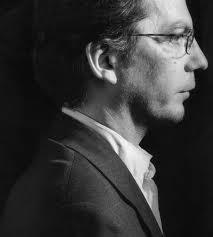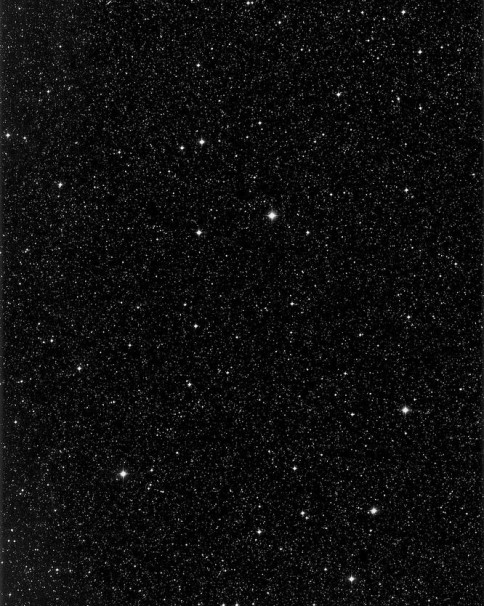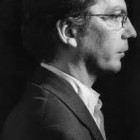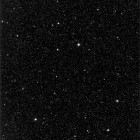1958: Thomas Ruff, one of six children, was born in 1958 in Zell am Harmersbach in the Black Forest, Germany. In the summer of 1974, Ruff acquired his first camera and after attending an evening class in the basic techniques of photography he started to experiment, taking shots similar to those he had seen in many amateur photography magazines.During his studies in Düsseldorf and inspired by the lectures of Benjamin HD Buchloh, Ruff developed his method of conceptual serial photography. Ruff began photographing landscapes, but while he was still a student he transitioned to the interiors of German living quarters, with typical features of the 1950s to 1970s. This was followed by similar views of buildings and portraits of friends and acquaintances from the Düsseldorf art and music scene, initially in small formats. Ruff studied photography from 1977 to 1985 with Bernd and Hilla Becher at the Kunstakademie Düsseldorf (Düsseldorf Art Academy), where fellow students included the photographers Andreas Gursky, Candida Höfer, Thomas Struth, Angelika Wengler, and Petra Wunderlich. In 1982, he spent six months at the Cité Internationale des Arts in Paris. In 1993, he was a scholar at Villa Massimo in Rome.In his studio between 1981 and 1985, Ruff photographed 60 half-length portraits in the same manner: Passport-like images, with the upper edge of the photographs situated just above the hair, even lighting, the subject between 25 and 35 years old, taken with a 9 × 12 cm negative and, because of the use of a flash, without any motion blur. The early portraits were black-and-white and small, but Ruff soon switched to color, using solid backgrounds in different colors; from a stack of colored card stock the sitter could choose one color, which then served as the background. The resulting Portraits depict the individual persons – often Ruff’s fellow students framed as in a passport photo, typically shown with emotionless expressions, sometimes face-on, sometimes in profile, and in front of a plain background. Ruff began to experiment with large-format printing in 1986, ultimately producing photographs up to seven by five feet in size (210 × 165 cm). By 1987 Ruff had distilled the project in several ways, settling on an almost exclusive use of the full frontal view and enlarging the finished work to monumental proportions. Art critic Charles Hagen, writing for the New York Times, commented: “Blown up to wall-size proportions, the photographs looked like gigantic banners of Eastern European dictators.” Because he found the effect of the colors too dominate in these, Ruff chose a light and neutral background for the portraits he made between 1986 and 1991. In a discussion with Philip Pocock (Journal for Contemporary Art, 1993), Ruff mentions a connection between his portraits and the police observation methods in Germany in the 1970s during the German Autumn. Indeed, while experimenting with composite faces in 1992, Ruff came across the Minolta Montage Unit, a picture generating machine, used by the German police in the 1970s to generate phantom pictures. Through a combination of mirrors, four portraits, fed into the machine, produce one composite picture. Ruff started out reconstructing faces but soon found it more interesting to construct artificial faces, which often combine features of men and women, that do not, but could conceivably, exist in reality; this resulted in his “Anderes Porträt” series (1994-1995). Ruff intended that large groups of the approximately eight-by-ten-inch color portraits would be hung together, so to add variety he photographed each person against a colored backdrop.



